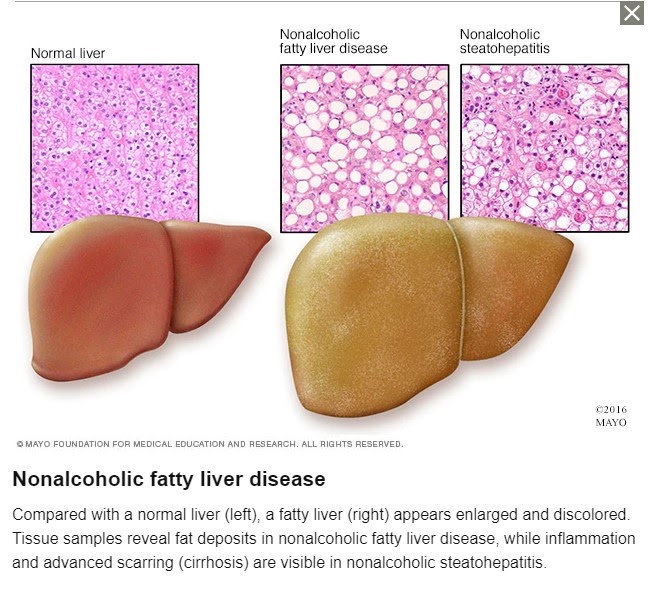Size of Liver in Inches: Normal Liver Size and Your Health
What is the normal size of a liver. How does a person’s age, sex, and health conditions affect the size of the liver? What are some medical conditions that can cause an enlarged liver.
Understanding the Normal Size of the Liver
The liver is the largest and heaviest internal organ in the human body, weighing a little over 3 pounds in adults. However, its size can vary depending on several factors, including age, sex, and underlying health conditions.
Liver Size by Age and Sex
According to a study published in the journal Indian Pediatrics, the average liver length in healthy children can be as follows:
- 1 to 3 months: Boys – 2.6 inches (6.5 cm), Girls – 2.4 inches (6.2 cm)
- 3 to 6 months: Boys – 2.8 inches (7.1 cm), Girls – 2.8 inches (7.2 cm)
- 6 to 12 months: Boys – 3.0 inches (7.5 cm), Girls – 3.1 inches (7.9 cm)
- 1 to 2 years: Boys – 3.4 inches (8.6 cm), Girls – 3.3 inches (8.5 cm)
- 2 to 4 years: Boys – 3.5 inches (9.0 cm), Girls – 3.5 inches (8.9 cm)
- 4 to 6 years: Boys – 4.1 inches (10.3 cm), Girls – 3.9 inches (9.8 cm)
- 6 to 8 years: Boys – 4.3 inches (10.8 cm), Girls – 4.3 inches (10.9 cm)
- 8 to 10 years: Boys – 4.7 inches (11.9 cm), Girls – 4.6 inches (11.7 cm)
- 10 to 12 years: Boys – 5.0 inches (12.6 cm), Girls – 4.8 inches (12.3 cm)
Another study published in the Journal of Ultrasound in Medicine examined the average liver diameter in adults, measured at the midclavicular line (an imaginary line from the middle of the collarbone down the body):

- 18 to 25 years: 5.4 inches (13.6 cm)
- 26 to 35 years: 5.4 inches (13.7 cm)
- 36 to 45 years: 5.5 inches (14.0 cm)
- 46 to 55 years: 5.6 inches (14.2 cm)
- 56 to 65 years: 5.7 inches (14.4 cm)
- Greater than 66 years: 5.6 inches (14.1 cm)
This study concluded that the average liver size in adults is 5.5 inches (14 cm).
Factors Affecting Liver Size
Liver size can vary based on several factors, including:
- Sex: Men tend to have a larger liver size than women, often due to their larger overall body size.
- Body Mass Index (BMI): Higher BMI can contribute to an enlarged liver, as seen in conditions like fatty liver disease.
- Height: Taller individuals may have a larger liver size.
- Alcohol consumption: Heavy alcohol use can lead to an enlarged liver, as seen in cirrhosis.
- Other medical conditions: Certain health conditions, such as acute hepatitis, biliary atresia, cirrhosis, and liver cancer, can also cause an enlarged liver.
Measuring Liver Size
Doctors typically use imaging studies, such as ultrasound, to estimate the size of the liver. Ultrasound is a non-invasive and radiation-free technique that uses sound waves to create images of the liver and other internal organs. An ultrasound professional or a liver specialist, known as a hepatologist, will perform the ultrasound and measure the size of the liver on the screen.

Enlarged Liver Conditions
When the liver becomes enlarged, it is called hepatomegaly. While an enlarged liver doesn’t always cause symptoms, some people may experience a feeling of abdominal fullness or pressure. Several medical conditions can lead to an enlarged liver, including:
- Acute hepatitis: Inflammation of the liver caused by one of the five hepatitis viruses.
- Biliary atresia: A rare condition affecting the bile ducts, often requiring surgery.
- Cirrhosis: Scarring of the liver, which can be caused by chronic alcohol use, hepatitis, or other liver-related conditions.
- Fatty liver: Excess fat accumulation in the liver, which can be reversed in early stages with weight loss and abstaining from alcohol.
- Infectious mononucleosis: A viral disease caused by the Epstein-Barr virus, which can lead to an enlarged liver.
- Liver cancer: Various types of cancer can affect the liver, with treatment options depending on the specific type.
Monitoring Liver Size and Health
Regular monitoring of liver size and function is important, especially for those with underlying health conditions or risk factors for liver disease. Healthcare professionals may use a combination of imaging studies, blood tests, and other diagnostic tools to assess liver health and detect any abnormalities in size or structure.
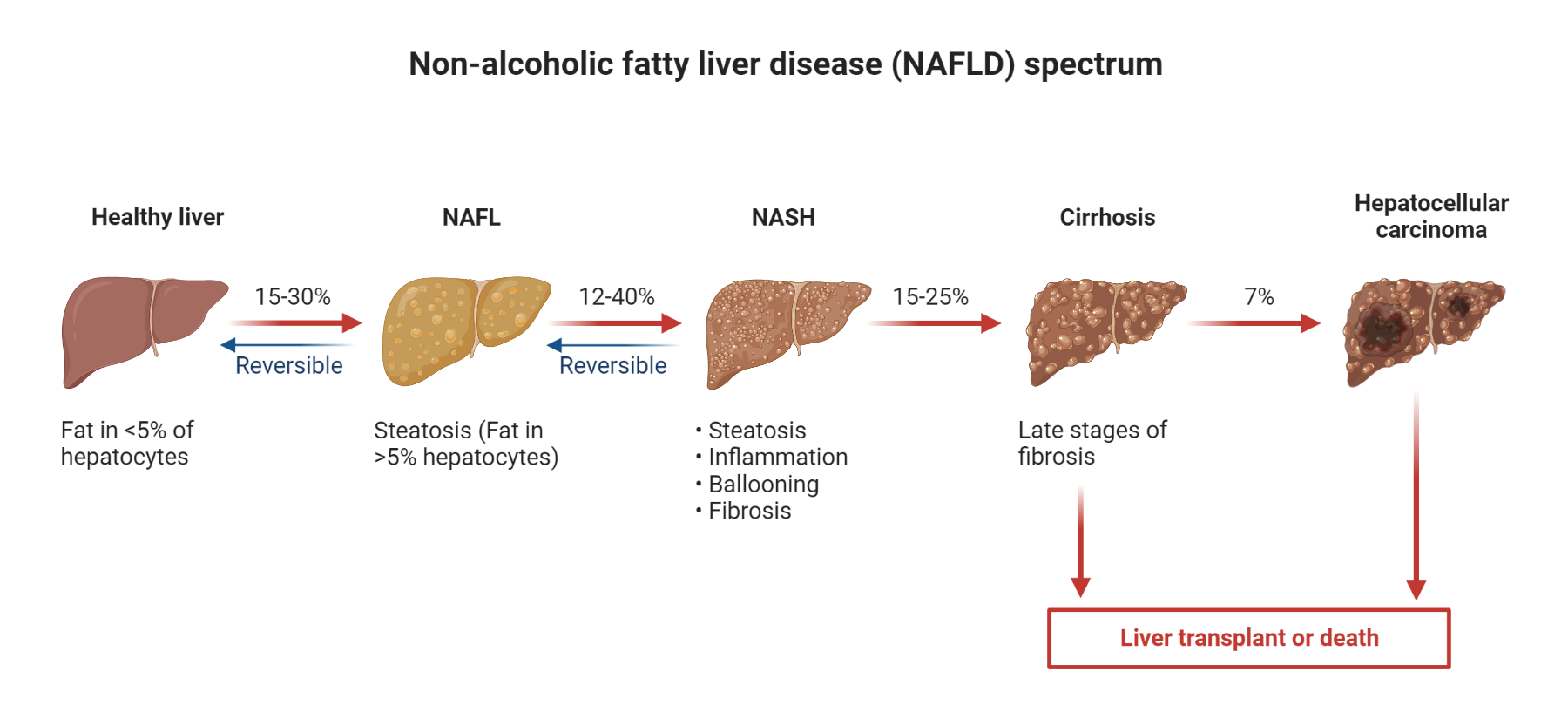
Conclusion
The size of the liver can vary based on a person’s age, sex, and overall health status. While an enlarged liver doesn’t always cause symptoms, it can be a sign of an underlying medical condition, such as acute hepatitis, cirrhosis, or liver cancer. Regular monitoring and early detection of liver-related health issues are crucial for maintaining overall well-being.
Normal Liver Size and Your Health
Your liver grows as you age, though certain health conditions, including acute hepatitis and fatty liver disease, can cause an enlarged liver. A large liver doesn’t always cause symptoms.
The liver is the body’s largest and heaviest internal organ. It serves many important purposes, including regulating levels of chemicals in the blood, making bile to digest fats, and making cholesterol, blood plasma proteins, and immune factors.
In adults, the liver weighs a little more than 3 pounds.
As you age, the liver varies in size, and certain health conditions can enlarge it.
Men tend to have a larger liver size than women. This is usually because men’s bodies tend to be larger. While liver sizes can vary slightly, there are some studies about the average liver size by age.
One such study was published in the journal Indian Pediatrics. The researchers performed ultrasound evaluation of 597 healthy children between the ages of 1 and 12 years.
The following are the results of the study measuring the average liver length for boys:
| Age | Liver length (Boys) |
| 1 to 3 months | 2.6 in. (6.5 cm) |
| 3 to 6 months | 2.8 in. (7.1 cm) |
| 6 to 12 months | 3.0 in. (7.5 cm) |
| 1 to 2 years | 3.4 in. (8.6 cm) |
| 2 to 4 years | 3.5 in. (9.0 cm) |
| 4 to 6 years | 4.1 in. (10.3 cm) |
| 6 to 8 years | 4.3 in. (10.8 cm) |
| 8 to 10 years | 4.7 in. (11.9 cm) |
| 10 to 12 years | 5.0 in. (12.6 cm) |
The following are the results for liver length in girls:
| Age | Liver length (Girls) |
| 1 to 3 months | 2.4 in. (6.2 cm) |
| 3 to 6 months | 2.8 in. (7.2 cm) |
| 6 to 12 months | 3.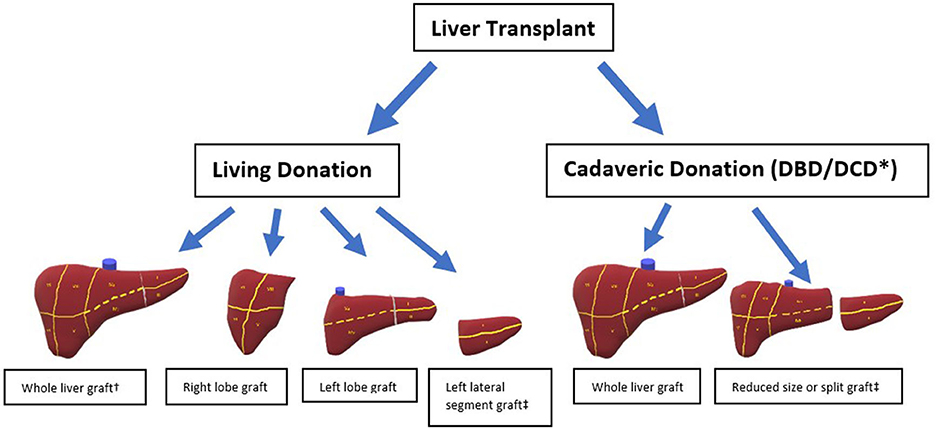 1 in. (7.9 cm) 1 in. (7.9 cm) |
| 1 to 2 years | 3.3 in. (8.5 cm) |
| 2 to 4 years | 3.5 in. (8.9 cm) |
| 4 to 6 years | 3.9 in. (9.8 cm) |
| 6 to 8 years | 4.3 in. (10.9 cm) |
| 8 to 10 years | 4.6 in. (11.7 cm) |
| 10 to 12 years | 4.8 in. (12.3 cm) |
Liver size can vary by sex, body mass index, height, amount of alcohol consumed, and many other factors.
An older study published in the Journal of Ultrasound in Medicine measured the average liver diameter of more than 2,080 male and female participants between 18 and 88 years old at the midclavicular line, which is an imaginary line moving down your body starting from the middle of your collarbone.
The study’s results found the following:
| Age | Average liver diameter |
| 18 to 25 years | 5.4 in. (13.6 cm) |
| 26 to 35 years | 5.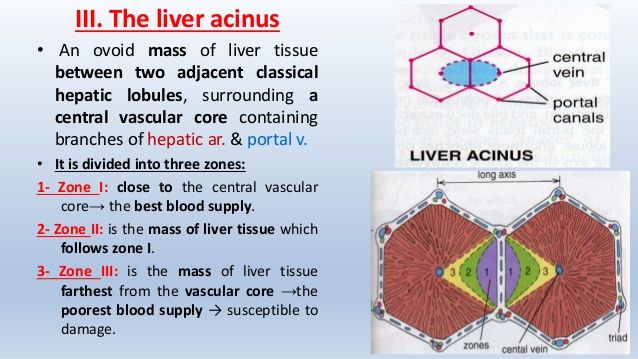 4 in. (13.7 cm) 4 in. (13.7 cm) |
| 36 to 45 years | 5.5 in. (14.0 cm) |
| 46 to 55 years | 5.6 in. (14.2 cm) |
| 56 to 65 years | 5.7 in. (14.4 cm) |
| Greater than 66 years | 5.6 in. (14.1 cm) |
The study represents one of the largest populations studied regarding average liver length, and it concluded that the average liver size in adults was 5.5 inches (in.), or 14 centimeters (cm).
Doctors use imaging studies to estimate liver size. Sometimes, when the liver is extremely enlarged, a doctor can identify the enlargement on an X-ray. When they want greater accuracy, they’ll usually use ultrasound.
Ultrasound is a painless imaging technique that uses sound waves to compare solid organs with other surroundings, such as blood. Because ultrasound uses sound waves, it doesn’t expose a person to radiation, like many imaging techniques do.
Typically, a person who specializes in ultrasound, known as an ultrasonographer, or a liver doctor will perform the ultrasound. You’ll lie down, and they’ll use a special wand device to transmit images of the liver to an ultrasound screen. The size of the liver is measured on the screen.
You’ll lie down, and they’ll use a special wand device to transmit images of the liver to an ultrasound screen. The size of the liver is measured on the screen.
The liver isn’t a proportional organ. Its lobes are different sizes and can be larger and smaller in areas depending on where the ultrasound professional is taking measurements. These differences can cause some variance accuracy. A doctor will also usually compare these results with other imaging studies, which may include a CT scan.
The condition of having an enlarged liver is called hepatomegaly. When the liver gets larger, it doesn’t always cause symptoms. Some people may report a feeling of abdominal fullness or pressure.
A variety of medical conditions can cause an enlarged liver.
Acute hepatitis
Acute hepatitis is inflammation of the liver caused by one of the five hepatitis viruses. The body may clear the virus or a person can develop chronic hepatitis, such as hepatitis B or hepatitis C.
Biliary atresia
Biliary atresia is a rare condition that affects the size or presence of the bile ducts.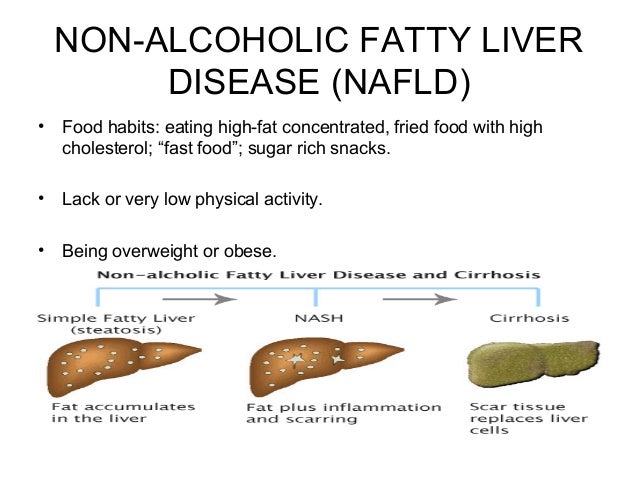 It often requires surgery to treat.
It often requires surgery to treat.
Cirrhosis
Cirrhosis can be the result of chronic alcohol consumption, hepatitis, or other liver-related conditions. Treatments for cirrhosis slow the progression of further scarring.
Fatty liver
Fatty liver is a condition that can occur due to heavy alcohol use or having more weight. It can be reversed in early stages with weight loss and abstaining from alcohol.
Infectious mononucleosis
Infectious mononucleosis is a viral disease caused by the Epstein-Barr virus. Many people will feel better in 2 weeks to several months.
Liver cancer
Various cancers can affect the liver. Treatments depend on the cancer type but may include surgery and radiation.
Right heart failure
Right heart failure can cause excess fluid to build up in the liver’s blood vessels. Treatments usually aim to reduce fluid buildup and improve heart function in this serious heart failure side effect.
Additionally, rare diseases like Gaucher’s disease, Wilson’s disease, or Niemann-Pick disease can cause liver enlargement. Treatments for these diseases depend on the condition.
Treatments for these diseases depend on the condition.
If you have an enlarged liver, your doctor will likely consider your overall symptoms, medical history, and imaging and blood studies before making a diagnosis.
Because your liver is so vital to your health, you should do the following to maintain good liver health:
- Maintain a healthy weight for you. Having more weight can lead to a condition called non-alcoholic fatty liver disease.
- Exercise at least 30 minutes a day. Exercise helps burn excess fat for energy. This also reduces the likelihood you’ll have fatty liver disease. Even if you feel like you don’t have 30 minutes to spare, try breaking up exercise into two 15-minute sessions or three 10-minute sessions.
- Don’t smoke. Smoking contains toxins that can injure your liver cells and most other cells in your body. Quitting can be very difficult, but a doctor can help you create a plan that’s right for you.

- Limit alcohol consumption. If you drink, one drink a day for women and no more than two drinks a day for men is a moderate, liver-friendly amount. If you already have a condition that affects your liver function, a doctor may suggest that you not drink at all.
- Avoid toxins. Chemicals like cleaning products, aerosols, insecticides, and additives all contain toxins that can damage your liver. Take proper safety precautions, such as wearing a mask and gloves, and use them in a ventilated area.
- Protect against hepatitis. Hepatitis B and C are two forms of liver disease that can cause chronic damage. They’re usually transmitted sexually or from sharing needles with a person who has these conditions.
- Don’t mix drugs and alcohol. The liver filters many medications, as well as alcohol. Combining the two can place too much demand on your liver and lead to damage. If you take a lot of medications, including supplements, it’s a good idea to review the list with a doctor to ensure you’re not overdoing it.

- Get vaccinated. There are vaccines available for hepatitis A and hepatitis B. They can help protect you and your liver.
If you have more questions about keeping your liver healthy, talk to a doctor.
The liver is an important organ that grows as you age. If the liver is enlarged, a doctor may perform various imaging studies and other tests to determine an underlying cause. If you’re concerned that your symptoms are the result of liver enlargement, talk to a doctor.
Liver Exam | Stanford Medicine 25
share
The signs of liver disease are for the most part to be found OUTSIDE the abdomen. The goal of this Stanford Medicine 25 session is for you to be able to list these signs from head to foot.
The purpose of liver palpation is to approximate liver size, feel for tenderness and masses. Keep in mind that many of the findings of liver disease are found outside the abdomen.
Technique
- With patient supine, place right hand on patient’s abdomen, just lateral to the rectus abdominis, well below lower border of liver dullness.
- Ask patient to take a deep breath and try to feel the liver edge as it descends.
- Be sure to allow liver to pass under the fingers of your right hand, note texture.
- Pressing too hard may interfere.
Findings
- Tenderness:
- The normal liver may be slightly tender.
- Greater tenderness suggests inflammation (e.g. hepatitis) or congestion (e.g. congestive heart disease).
- Consistency
- Firm, bluntness/rounding or irregularity of liver edge suggest an abnormality.
- Obstructed, distended gallbladder may be palpable on the inferior liver edge.
- Nodules may be palpable; rock hard and umbilicated (central dimple) nodules suggest malignancy.
Duputryen’s contracture (Credit)
The purpose of liver percussion is to measure the liver size.
Technique
-
- Starting in the midclavicular line at about the 3rd intercostal space, lightly percuss and move down.
- Percuss inferiorly until dullness denotes the liver’s upper border (usually at 5th intercostal space in MCL). See 5-7-9 rule.
- Resume percussion from below the umbilicus on the midclavicular line in an area of tympany.
- Percuss superiorly until dullness indicates the liver’s inferior border.
- Measure span in centimeters.
Findings
- Liver span: commonly clinically under estimated.
- Midclavicular line: normally 6-12cm.
- Midsternal line: normally 4-8cm.
- False positives for enlarged liver span: right pleural effusion, consolidated lung.
- COPD may depress diaphragm and hence depress liver borders, but not span.
Duputryen’s contracture (Credit)
Patient presenting with abdominal pain? See this video to diagnose causes of pain related to the abdominal wall.
- Learn how to palpate the liver
- Learn how to percuss the liver
- Additional Learning Objective: Learn how to diagnosis abdominal pain from the abdominal wall
Everything we know about saddle sizes
Saddle sizes for the rider.
Each horse must have its own, OWN and SUITABLE saddle.
However, to our and horse happiness, saddles appeared with changeable trees and pillows, which allows you to adjust the saddle to different horses. But the saddle is uncomfortable for you to personally change it will not work …
That’s why we recommend:
Ideally, ride in the saddle you want to buy. At DIFFERENT gaits. All people and horses are strictly individual, horses also have individual movements. Therefore, you can be mercilessly thrown out of your beloved and very expensive saddle of a neighbor in the stable. Or your saddle will be very uncomfortable for your young man. So try to find a saddle before buying. From friends, neighbors or competitors in the equestrian business.
Or your saddle will be very uncomfortable for your young man. So try to find a saddle before buying. From friends, neighbors or competitors in the equestrian business.
Decide on the saddle size for you. Also, you can try on the saddle on the “barrel” in a retail store. Such a fitting will not give ANYTHING about your feelings in this saddle on a live horse, however, you will show off in a new saddle in front of a mirror and understand whether the saddle is not small or not big for you. To do such an operation on a live horse is pointless. Climbing into a loose saddle and sitting in it is inconvenient, and the fitters will most likely not let you tighten the girth on a new saddle. After all, traces on the girths will remain after the first tightening of the girth, which will transfer the saddle from new to used.
The size of the English saddle is determined by the distance from the attachment of the tree (button on the front pommel) to the center of the pommel. Size is in inches. For example 16.5″ or 18″.
Size is in inches. For example 16.5″ or 18″.
1 inch is equal to 2.54 cm. And the English (classic) saddles that we see with you every day are called. These are the usual dressage, universal and jumping models.
Western saddle size is determined by the distance from the back of the pommel to the seam on the pommel. Size is in inches. For example 13″ or 15″ Since only the seat is measured, the required size will be less than English.
Australian saddle size Each manufacturer has its own standards, so before buying, contact the seller and check the measurements of the particular instance you want to purchase.
Saddle selection for the rider.
English Saddles
Sit on a chair with your upper leg at a right angle to your lower leg. Now measure the length of the thigh from the extreme point of the buttock to the extreme point of the knee.
In the plate, select a suitable English saddle:
| Thigh length | Seat size |
| Less than 41 cm | 13-14″ (inch) |
| 42 – 46 cm | 15″ (inch) |
| 47 – 51 cm | 16″ (inch) |
| 51 – 54 cm | 17″ (inch) |
| 55 – 57 cm | 17. 5″ (inch) 5″ (inch) |
| Over 57 cm | 18″ (inch) |
Western saddle sizes are determined by rider weight:
| Saddle size in inches | 14″ | 15″ | 16″ | 17″ | 18″ | 19″ |
| Woman’s weight in kg. | to 42 | 43-54 | 55-63 | 64-72 | 73-81 | 82-91 |
| Male weight in kg. | to 49 | 50-59 | 60-72 | 73-81 | 82-90 | 90-99 |
And finally, when YOU are already in the saddle – look:
You should have at least four fingers of space on the pommel of the saddle. If you do not have enough space, then the saddle will be small. If you can fit the whole hand or even more, then the saddle is too big for you
Choosing a saddle for a horse: presence of your veterinarian. This ensures the right choice and saves the horse from back problems as a result of using the wrong saddle. However, we do not know of a single store in Russia that allows you to tighten the girths and, as a result, fully try on new saddles. The reason is simple – traces on the plows will remain after the first tightening, which will transfer the saddle from new to used. Even in our store, not all saddles are available for a full-fledged fitting.
This ensures the right choice and saves the horse from back problems as a result of using the wrong saddle. However, we do not know of a single store in Russia that allows you to tighten the girths and, as a result, fully try on new saddles. The reason is simple – traces on the plows will remain after the first tightening, which will transfer the saddle from new to used. Even in our store, not all saddles are available for a full-fledged fitting.
At the same time, the wrong saddle size for the rider will also cause a lot of trouble for the tandem, because. Too large or too small a saddle not only causes discomfort to the rider, but also threatens the horse with trouble due to improper distribution of weight on the back.
Here are some tips for taking measurements from the horse’s back. These measurements will help you choose the saddle that best suits the shape of your pet’s back.
REMEMBER, the saddle must fit your horse first and then you. Although, if you are reading this, then YOU have already decided on your sizes.
Initially, you need to determine what size saddle tree your horse needs and suits him best.
To do this, you can use a special WINTEC line, or a pattern from our website. (DOWNLOAD).
Cut out the template along the contour and place it on the horse’s back two fingers behind his shoulder blades. This is the ideal position for taking measurements. If any other saddle is available, place it on the horse’s back in the correct position and mark the spot on the horse’s back where the shiny rivets or rings (these are visible on the sides of the pommel) will be located above. This will be the place of measurements.
| …………………………………………. …………….. | …………………………………………. ……….. |
Secondly – estimate the height of the withers.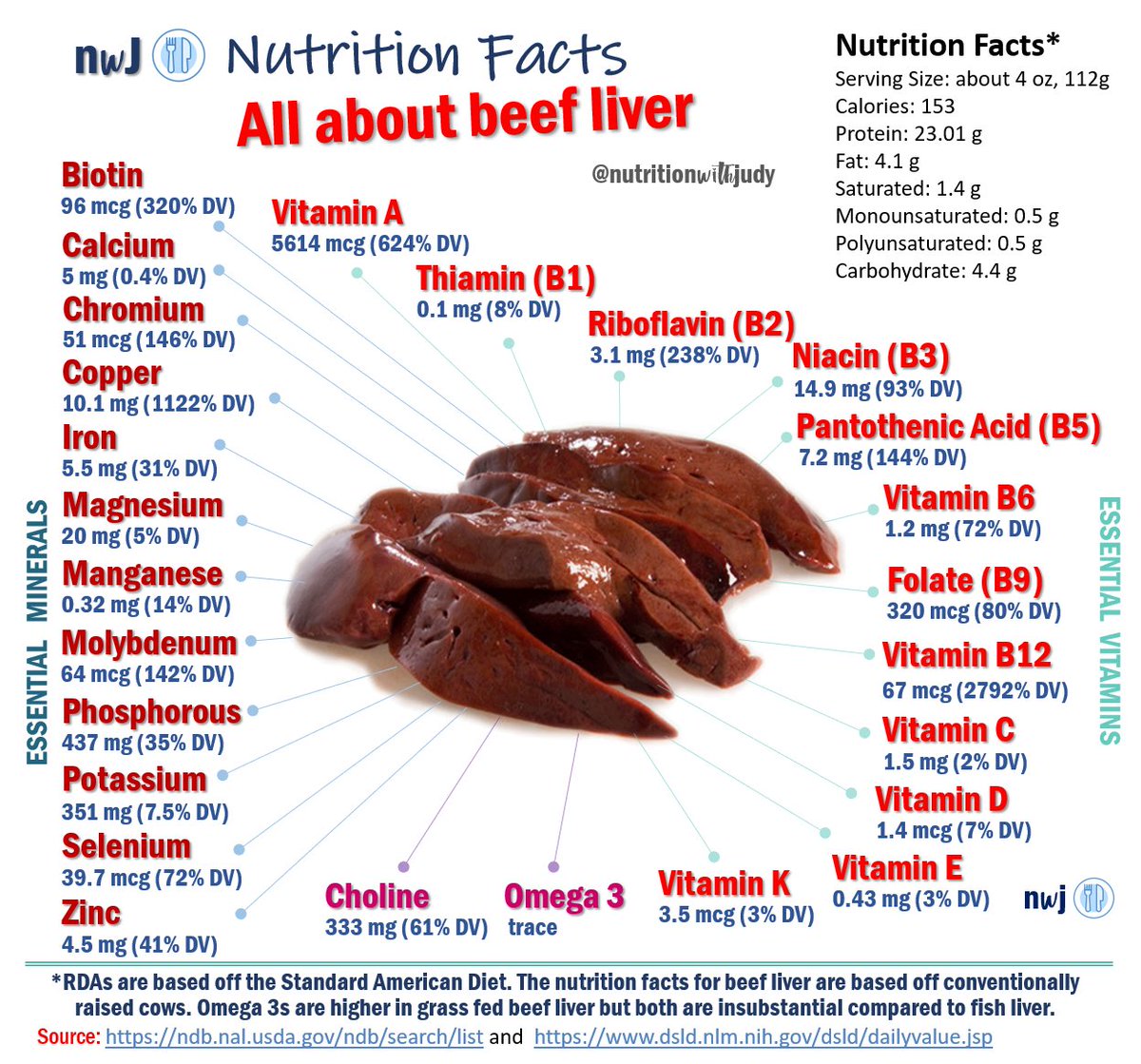 For horses with very high withers, saddles with a special cut are available.
For horses with very high withers, saddles with a special cut are available.
Finally, you should decide on the shape of your horse’s back. This can be seen by looking at the horse from the side. The backs are even, and there are also with a significant indentation. Accordingly, the cushions of different saddles also come in different shapes.
| Correct seat position on the back of a horse …………………………………………. ……………………… | Make sure the horse is level, and the saddle lay 5 cm from the horse’s shoulder |
| Check seat channel for clearance and make sure the saddle is nowhere touches the spine | The seat must lie evenly. Run your hand under the pillows |
| If saddle has CAIR® cushions, then a tight fit will not be possible.  Sit in the saddle or load it. Check again. Everything will be OK. | Check saddle balance (front-rear). He must be perfect. If the saddle is with the EASY-CHANGE system, then insert the desired inserts under the cushions. To correct other saddles, you will need pommel or pommel lift gels. |
Separate – VIDEO ABOUT SADDLE SELECTION (in English).
Well, the saddest thing is that each manufacturer has its own markings for the size of the trees and the actual dimensions of the saddle for the rider. And few people indicate the shape of the saddle cushions on the back of the horse.
Approximate tree sizes, different manufacturers:
For English saddle brands:
N (narrow),
NM (medium narrow),
M (medium),
MW (medium wide),
W (wide),
EW (very wide).
The Kieffer brand has a standard tree size of 32 for all saddles initially (for a medium wide back), then it is crimped on a machine for a specific horse’s back.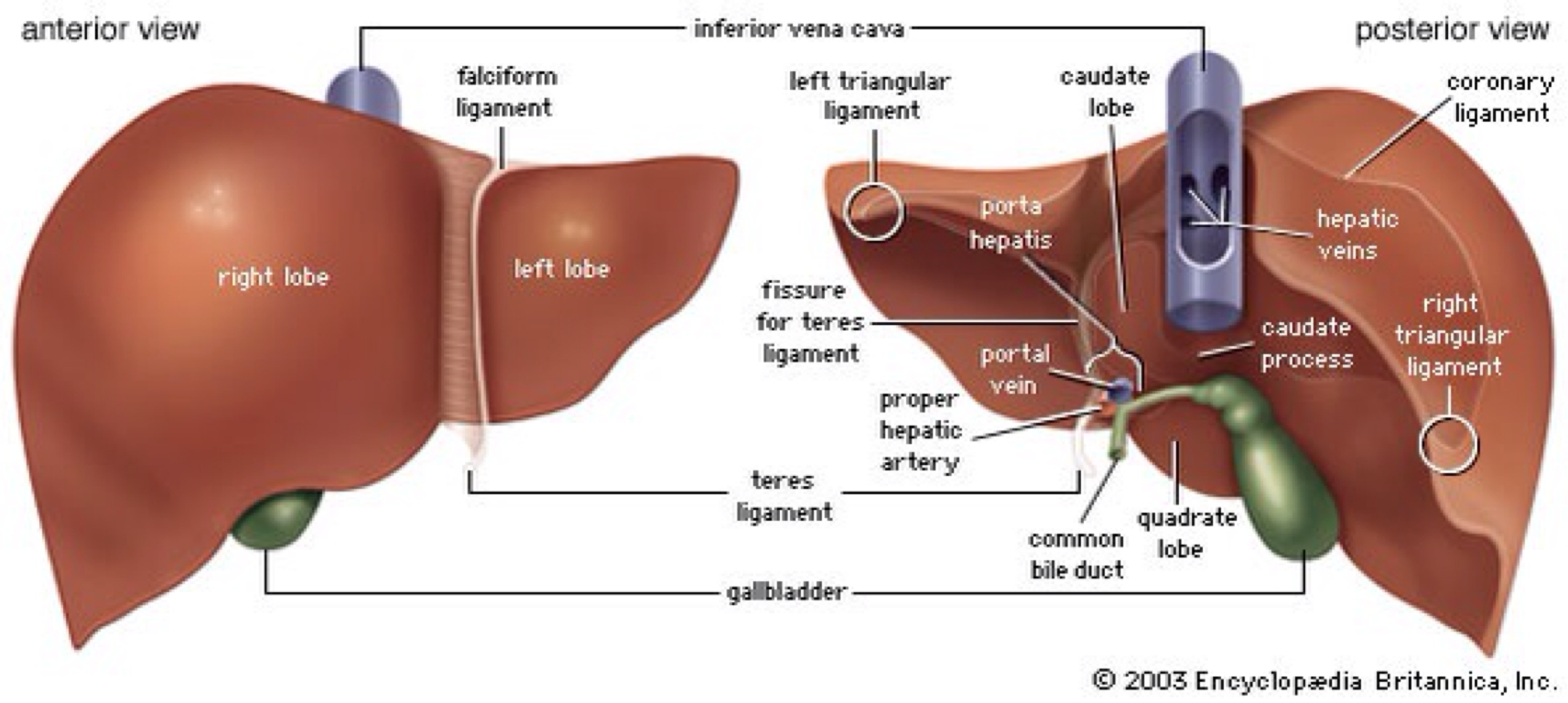
With the Stubben brand, the tree fork size goes from 27 (narrow back) to 32 (very wide back).
The Prestige brand has from 30 (narrow) to 37 (very wide back), the tree is crimped slightly on the machine.
1-2-3-4 is the standard tree saddle width (narrow-medium-medium wide-wide).
For many manufacturers, it is indicated 31-32-33-34, such as Centaur or Pfiff are limited to one digit. They have it printed under the wing separately.
Wintec / Thorowgood / Daslo / Tekna / Kent&Masters / Faifax / Bates / Pessoa / Anky – have interchangeable tree forks in different colors, each of which corresponds to a certain size.
Kieffer (Germany)
the standard size of the tree is 32 (for a medium wide back), then it is crimped on a machine for a specific horse’s back. Types of Kieffer saddles and interpretation of their designations
Daw-Mag (Poland)
S – narrow
M – medium
L – medium wide
XL – wide
* Channel 4 fingers rear
Albion (England)
N – narrow
NM – medium narrow
M – medium
MW – medium wide
W – wide
EW – extra wide
* Channel 4 fingers at the back
Kentaur (Czech Republic) / Pfiff (Germany)
1 – narrow
2 – medium
3 – medium wide
4 – wide
* Channel 4 fingers behind
Prestige (Italy)
30-31cm – N narrow back, high withers
32cm – M medium back, high or medium withers (2)
33cm – MW medium wide back, medium withers (3)
34-35cm – W wide back, medium withers (4)
36-37cm – EW very broad back, low withers
* Depending on the year of the model, the channel is 3 or 4 fingers behind
Stubben (Germany)
7 sizes for deep seat saddles:
27cm – narrow back,
28cm – medium back, high withers,
29cm – medium wide back, medium withers,
30cm – wide back, medium withers,
31cm – wide back, low withers,
32cm, 32cm WB – very wide back, low withers
5 sizes for flat seat saddles:
A (28cm) narrow back,
B (29cm) medium or medium wide back, medium or medium high withers,
C (30cm) medium wide or wide back, medium or low withers,
D (31cm), E (32cm) – wide or very wide back, low withers
* Depending on the year of the model, the channel is 3 or 4 fingers behind
Sommer (Germany)
28 – narrow high withers, narrow back
29-30 – medium back, high or medium withers
31-32 – medium wide back, medium withers
33-34 – wide withers, wide back
35-36 – very broad back, low withers
Jorge Canaves / JC / Supreme (Argentina)
31 – narrow back, high withers
32 – medium back, high or medium withers
33 – medium wide back, medium withers
34 – wide back, low withers
* Depending on the year of the model, the channel is 3 or 4 fingers behind
Euroriding (England)
31- narrow
32- medium
33- medium wide
34 – wide
* Depending on the year of the model, the channel is 3 or 4 fingers behind
Hermida (Belarus)
S – 26cm (narrow)
M – 28cm (medium)
L – 30cm (medium wide)
XL – 32cm (wide)
* not marked on saddle
Passier (Germany)
The manufacturer declared sizes from 23. 5 to 32 cm in increments of 0.5 cm.
5 to 32 cm in increments of 0.5 cm.
Please note that the size range of this brand is different from other manufacturers, because. the ends of the fork of the Passier tree are shorter to give freedom to the horse’s shoulders.
Standard for Passier 27.5cm – Medium (approximately 33 for Prestige brand)
In general, our choice is WINTEC and BATES saddles. With tree changing systems and interchangeable cushion inserts, these saddles can fit almost any horse.
causes of changes and what they can mean
Contents
- 1 Normal liver size on ultrasound: what changes are possible and why do they occur?
- 1.1 Normal liver size on ultrasound
- 1.1.1 What is ultrasound?
- 1.1.2 Normal liver size on ultrasound
- 1.1.3 Causes of changes in liver size
- 1.1.4 What do changes in liver size mean?
- 1.2 Effects of the liver on the body
- 1.3 Purpose of liver ultrasound
- 1.
 4 Indications for liver ultrasound
4 Indications for liver ultrasound- 1.4.1 Main indications
- 1.4.2 Additional indications
- 1.5 Normal liver size on ultrasound: What does normal liver size mean
- 1.6 Causes changes in liver size
- 1.7 Size liver disease in diseases
- 1.8 Liver structure disorders in hepatitis
- 1.9 Liver enlargement in cirrhosis
- 1.10 Inflammatory liver disease
- 1.10.1 Hepatitis
- 1.10.2 Hepatosis
- 1.10.3 Cirrhosis
- 1.10.4 Abscess
- 1.11 Newborn liver size
- 1.12 Liver in pregnancy
- 1.13 Prevention of changes in liver size
- 1.14 Treatment diseases of the liver
- 1.15 Diagnosis of liver diseases in diagnostic clinics
- 1.15.1 Ultrasound of the liver
- 1.15.2 How the diagnosis is made
- 1.15.3 Diagnostic results
- 1.16 Prevention of liver disease
- 1.16.1 Nutrition
- 1.
 16.2 Moderate alcohol consumption
16.2 Moderate alcohol consumption - 1.16.3 Prevention of viral infection
- 1.16.4 Sedentary lifestyle
- 1.16.5 Under the control of hormonal processes
- 1.17 Proper nutrition for liver health
- 1.17.1 What is liver health?
- 1.17.2 How to eat right to keep the liver healthy?
- 1.17.3 What else can I do?
- 1.18 Related videos:
- 1.19 Q&A:
- 1.19.0.1 What is liver ultrasound?
- 1.19.0.2 What is the normal size of the liver on ultrasound?
- 1.19.0.3 What diseases can lead to a change in the size of the liver on ultrasound?
- 1.19.0.4 What does enlarged liver mean on ultrasound?
- 1.19.0.5 What does reduced liver size mean on ultrasound?
- 1.19.0.6 How to determine the state of the liver on ultrasound?
- 1.19.0.7 Can ultrasound show early stages of liver disease?
- 1.19.0.8 Can ultrasound replace a liver biopsy?
- 1.1 Normal liver size on ultrasound
Find out what is the normal size of the liver on ultrasound and why it can change. Read about the main causes of these changes and how they can be detected with a liver ultrasound.
Read about the main causes of these changes and how they can be detected with a liver ultrasound.
The liver is an important organ that performs many functions in the body, such as the processing and disposal of toxins, participation in the digestive process and the production of bile. Quite often, changes in the size of the liver are detected during ultrasound. But what size is considered normal, and what changes can indicate the presence of diseases?
In this article we will look at what the normal size of the liver on ultrasound means and what factors can affect its change. We will also tell you what diseases can be associated with a change in the size of the liver and what are their symptoms.
We will also consider what diagnostic methods will help to identify abnormalities in the liver, and what measures should be taken in case of pathologies. Understanding the causes of changes in the size of the liver and timely access to a doctor will help maintain health and prevent the development of dangerous diseases.
Normal liver size on ultrasound
What is ultrasound?
Ultrasound (diagnosis ultrasound) is a medical diagnostic method that uses ultrasound waves to create images of internal organs and tissues.
Normal liver size on ultrasound
Normal liver size on ultrasound is usually 14 to 18 cm long, 8 to 12 cm wide and up to 15 cm high. However, sizes may vary slightly depending on the sex, age and physiology of the patient.
Causes of changes in the size of the liver
Changes in the size of the liver can occur due to various reasons. Some of these may include:
- Chronic liver diseases such as cirrhosis or hepatitis
- Obesity
- Alcohol or drug addiction
- Hereditary diseases such as hemochromatosis and Wilson’s disease
- Infectious diseases, such as viral hepatitis and malaria, can cause enlargement or narrowing of the liver
What do changes in liver size mean?
Changes in liver size seen on ultrasound can be a sign of various diseases. For example, an increase in the size of the liver may indicate cirrhosis or hepatitis, and a decrease in size may be associated with a viral infection. Therefore, if changes in the size of the liver are detected, additional diagnostics and consultation with a doctor is necessary.
For example, an increase in the size of the liver may indicate cirrhosis or hepatitis, and a decrease in size may be associated with a viral infection. Therefore, if changes in the size of the liver are detected, additional diagnostics and consultation with a doctor is necessary.
Effect of the liver on the body
The liver is the main organ responsible for removing toxins from the body. It also plays an important role in digestion, bile production, and nutrient processing. When the liver is functioning properly, it ensures the normal functioning of the body.
With pathological changes in the liver, its size may increase or decrease. This can be due to various reasons, from inflammatory diseases to cancer metastases. Therefore, a timely visit to the doctor and an ultrasound scan allows you to identify the presence of a problem earlier and take measures to eliminate it.
- What symptoms can indicate the presence of problems with the liver?
- What research will help start treatment on time?
- How to monitor the state of the liver to prevent the development of serious diseases?
You can discuss all these questions with your doctor at the first visit or at regular consultations if you belong to a risk group.
Purpose of ultrasound examination of the liver
An ultrasound examination of the liver is performed to determine its size, shape and structure, as well as to identify possible changes in the functioning of the organ. This is a non-invasive examination method that allows you to safely and quickly obtain information about the state of the liver.
Ultrasound of the liver is also performed to monitor the effectiveness of the treatment of diseases such as hepatitis, cirrhosis, hepatosis, fatty degeneration. In addition, ultrasound can be used in preparation for liver surgery and after it to evaluate the results of surgery.
The normal size of a liver on ultrasound for an adult is 14-16 cm long, 20-22 cm wide and 9-10 cm thick. If changes are detected during an ultrasound examination, the doctor may prescribe additional studies to clarify the diagnosis and determine the cause of the violation.
Indications for ultrasound examination of the liver
Main indications
Ultrasound examination of the liver is a mandatory procedure in the detection of various diseases of the digestive system. The main indications for liver ultrasound can be:
The main indications for liver ultrasound can be:
- Complaints of pain and discomfort in the right hypochondrium;
- Detection of pathological changes during examinations of the gallbladder and pancreas;
- Suspicion of a tumor process in the liver;
- History of liver disease;
- Diseases that can adversely affect the functioning of the digestive system, such as cirrhosis of the liver.
Additional indications
In addition to the main indications, an ultrasound examination of the liver may be performed to detect other abnormalities and changes. Additional indications can be:
- Increased level of bilirubin in the blood;
- The presence of fatty deposits in the liver, which may occur with the abuse of alcoholic beverages and lack of physical activity;
- Violation of the functioning of other organs of the digestive system, which may adversely affect the functioning of the liver.
In any case, an ultrasound examination of the liver will help to detect pathological changes and start treatment in a timely manner, thereby preventing the development of serious complications and maintaining health.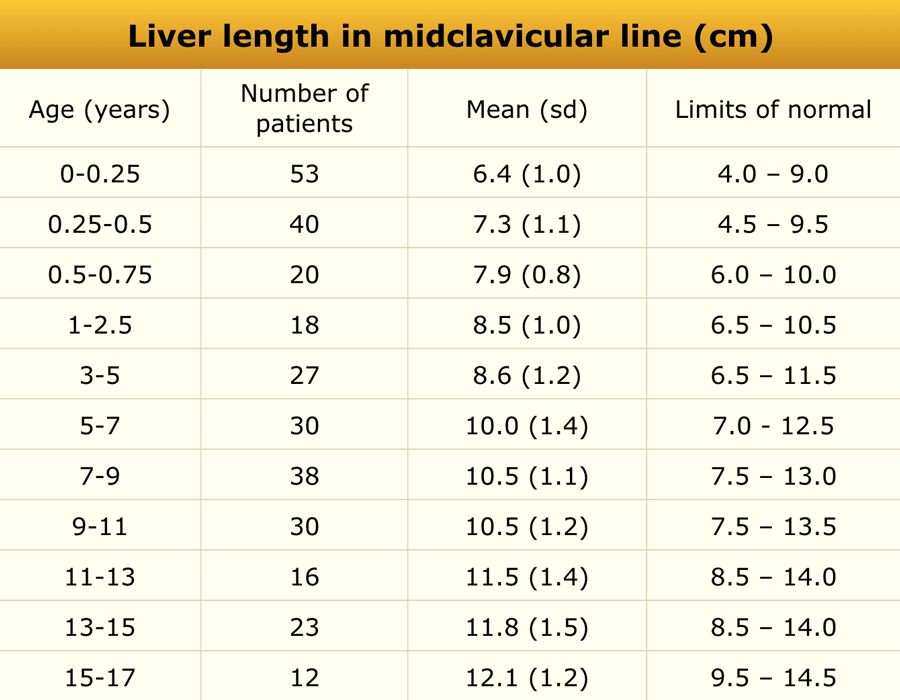
Normal liver size on ultrasound: What does a normal liver size mean
The liver is an organ that is very important for the proper functioning of the body. It is the center of metabolism and cleans the blood. On ultrasound of the liver, the size of this organ is one of the main indicators of health.
If an ultrasound examination reveals that the size of the liver is within the specified parameters, this means that the liver is in a normal state and functions properly.
It is important to note that changes in the size of the liver can be due to various causes, such as the presence of diseases, overeating or drinking alcohol. Therefore, in order to avoid problems, it is recommended to regularly conduct an ultrasound examination and monitor the condition of the liver.
Causes of changes in the size of the liver
Diseases of the liver: One of the main causes of changes in the size of the liver on ultrasound is liver diseases.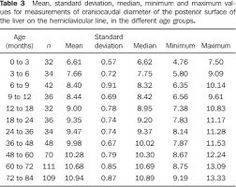 Violations can occur due to inflammatory processes, toxic effects, fatty degeneration or cirrhosis of the liver.
Violations can occur due to inflammatory processes, toxic effects, fatty degeneration or cirrhosis of the liver.
Hepatitis: Hepatitis is a viral disease that can cause the liver to become enlarged. All forms of hepatitis can affect the liver and change its size.
Alcohol: Patients who drink regularly may develop alcoholic liver disease. It can lead to an increase in the liver, since harmful substances from alcohol are utilized in it.
Fatty degeneration: One of the most common causes of liver enlargement is fatty degeneration. It occurs when excessive accumulation of fatty compounds in the parenchyma of the organ, which can lead to metabolic disorders and changes in size.
- Metabolic disorders: Some diseases, such as diabetes or obesity, can lead to metabolic disorders and associated changes in liver size.
- Intra-organ masses: Some hernias, cysts and tumors inside the abdominal cavity can lead to impaired liver function and changes in its size.

Liver size in diseases
The size of the liver can change with various diseases, from mild dysfunction to dangerous infections and tumors.
Hepatitis
Hepatitis of viral origin can lead to an increase in liver size. This is because a viral infection causes liver inflammation and can lead to liver dysfunction. In some cases, it may fall outside the allowable range of sizes specified in the standards.
Cirrhosis of the liver
Cirrhosis is one of the most serious diseases that can lead to abnormal liver size. Cirrhosis is a disease in which liver tissue is replaced by scarring, which causes a gradual loss of organ function and a violation of its normal size. Cirrhosis can lead to impaired blood flow to the liver and possible damage to its size.
Fatty liver
In fatty liver, fat accumulates in the liver cells, which can lead to a violation of its normal size. Its possible causes may be related to nutrition and lifestyle and can lead to metabolic disorders and obesity.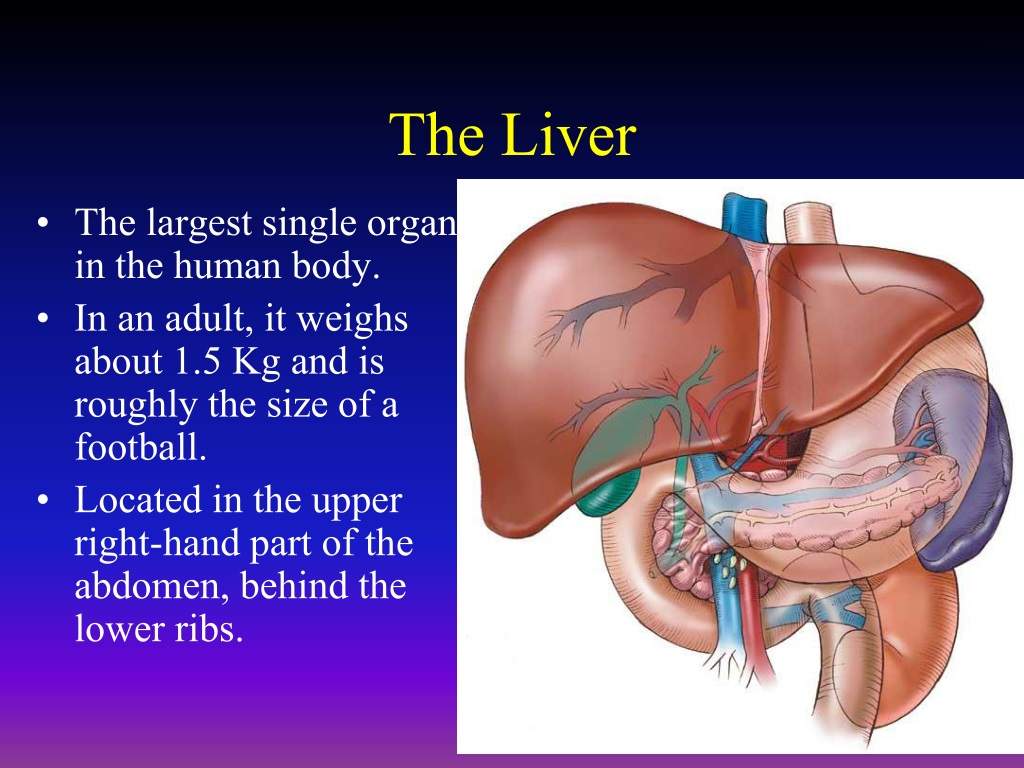 If left unchecked, fatty liver disease can lead to serious consequences such as cirrhosis and cancer.
If left unchecked, fatty liver disease can lead to serious consequences such as cirrhosis and cancer.
A change in the size of the liver may be a sign of serious illness. To avoid possible complications, it is important to consult a doctor and undergo the necessary examinations of your body.
Liver disorders in hepatitis
Hepatitis is a disease of the liver that can lead to changes in the size and structure of this organ. With hepatitis, an inflammatory process occurs in the liver, which affects its functionality, weakens the immune system and causes various disorders. One of the most common is a change in the structure of the liver.
In hepatitis, the liver can become enlarged due to simultaneous inflammation and swelling of tissues that take up more space inside the organ. In addition, the structure of tissues may change, which leads to damage to the channels of the biliary system and other elements. The process of transformation of substances can also suffer from this, which leads to metabolic disorders and symptoms characteristic of hepatitis.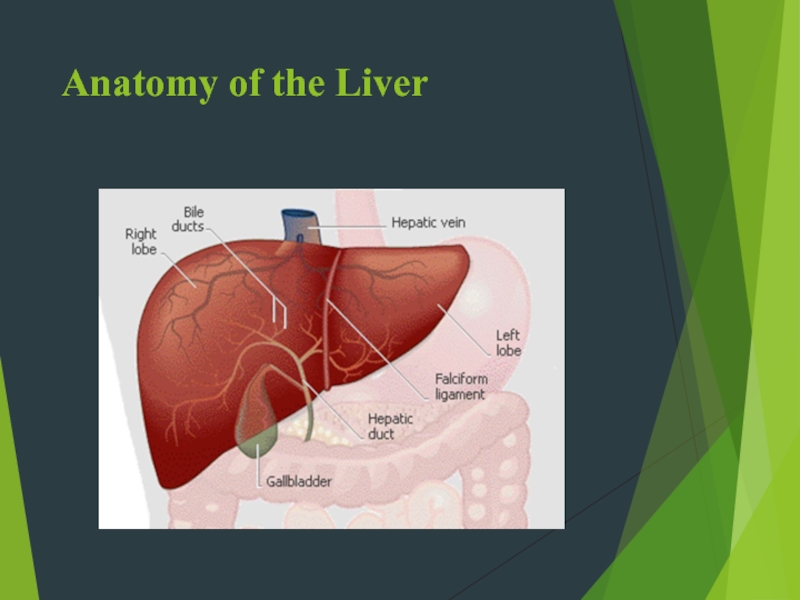
Changes in the structure and size of the liver in hepatitis should always be considered as serious pathological changes requiring careful medical monitoring and treatment. The sooner treatment begins, the more likely it is to fully restore liver function and avoid additional consequences of the disease.
- Conclusions:
- Hepatitis is a serious disease of the liver that affects its structure and size;
- Changes may occur due to inflammation and tissue swelling;
- Structural disorders may affect liver function, cause metabolic disorders and other symptoms;
- Surgical treatment helps to restore the functionality of the liver and maintain health.
Enlargement of the liver in cirrhosis
Cirrhosis of the liver is one of the most serious and dangerous diseases of this organ. In this disease, the liver tissue is gradually destroyed and replaced by connective tissue, which leads to an enlarged liver.
As a result of liver enlargement in cirrhosis, various complications can occur, such as impaired liver function, ascites, diabetes mellitus, and others. Therefore, it is important to consult a doctor in a timely manner and regularly monitor the condition of the liver.
Ultrasound is used to diagnose liver cirrhosis, which can detect changes in the size and structure of the organ. At the same time, a significant increase in the liver with cirrhosis is considered one of the main signs of this disease.
Treatment of liver cirrhosis is aimed at slowing the progression of the disease and improving liver function. An important component of treatment is proper nutrition, as well as avoiding alcohol and smoking.
Inflammatory liver disease
Hepatitis
Hepatitis is a group of inflammatory liver diseases that can be caused by a variety of factors, including viruses, alcohol, drugs, and other toxins. Symptoms of hepatitis can range from mild to severe, including jaundice, liver enlargement, fatigue, and others.
Hepatosis
Hepatosis is a metabolic disorder in the liver, which leads to a violation of its functions and the ability to process toxins. It can be caused by obesity, alcoholic beverages, and other factors. Symptoms of hepatosis may include liver enlargement and jaundice.
Cirrhosis
Cirrhosis is a chronic liver disease, which, as a result of constant inflammation, leads to the accumulation of fatty deposits, the replacement of healthy liver tissue with scar tissue and disruption of its functions. The symptoms of cirrhosis can vary, including an enlarged liver, jaundice, brain damage, and other problems.
Abscess
An abscess is a purulent inflammation of the liver that may result from infection or trauma. Symptoms of an abscess may include acute pain in the right upper quadrant of the abdomen, jaundice, and fever.
- Inflammatory liver disease can cause organ enlargement and other abnormal findings on ultrasound.
- It is important to see a doctor promptly if you experience any symptoms related to liver health.

Newborn liver size
Newborn liver size varies at birth, depending on many factors, including birth weight and mother’s age. Usually, the normal size of the liver for newborns can range from 3 to 4 cm in length and 2 to 3 cm in width.
Some changes in liver size that can be found on liver ultrasound may be associated with liver disease such as hepatitis or cirrhosis. However, in most cases, changes in the size of the liver in newborns are not a sign of disease and may be caused by physiological factors.
It is important to note that the true size of the liver may be underestimated on ultrasound, as in newborns it may be dense and dense. Therefore, when assessing the size of the liver in newborns, it is necessary to take into account not only the size of the organ, but also its texture and structure.
If a newborn liver ultrasound reveals a change in size, a pediatrician or pediatric gastroenterologist should be contacted for additional consultations and investigations to determine the cause of the change in liver size.
Liver during pregnancy
During pregnancy, the liver plays an important role in the life of the fetus and mother. It protects and cleanses the body of toxins and toxins, and also synthesizes hormones and bile.
It is quite difficult to establish the normal size of the liver on ultrasound during pregnancy due to natural changes associated with the increased volume of the uterus and fetus. However, a significant increase in the liver or the appearance of echogenic inclusions may indicate the need for additional examination and treatment.
Causes of changes in the size of the liver during pregnancy may be as follows: new preeclampsia doctor and conduct additional examination. Generally, the liver has a stable size and shape, but in some cases, its size may increase or decrease. Changes in the size of the liver can indicate the presence of various diseases, such as hepatitis, cirrhosis of the liver, or fatty degeneration. Some factors, such as alcohol and drug abuse, obesity, biliary tract disease, or hereditary problems, can also cause changes in the size of the liver. Therefore, it is important to monitor your health and consult a doctor in a timely manner at the first sign of changes in liver size. If an enlarged liver is found, additional tests and examinations should be performed to determine the cause of this change. In some cases, treatment may be required, which is prescribed by a doctor. However, do not panic and start treatment on your own right away. Some changes in liver size may be temporary and can be corrected with lifestyle changes, such as avoiding alcohol, losing weight, or eating a healthy diet. In any case, if you find changes in the size of the liver or are concerned about your health, you should see a doctor who will examine and prescribe treatment, if necessary. Treatment of liver diseases depends on the specific diagnosis. Hepatitis is treated with drugs that improve liver function and fight the virus. In some cases, hospitalization and intensive care are necessary. With cirrhosis of the liver, first of all, it is necessary to exclude alcohol and smoking from the diet. Antispasmodics can help, as well as drugs that improve blood circulation and liver function. Fatty liver requires immediate treatment. It is important to lead a healthy lifestyle, follow a diet and move actively. It is also important to have regular medical check-ups. Ultrasound of the liver is the most popular method for diagnosing liver diseases, as it is non-invasive and safe for the patient. In liver disease clinics, doctors use ultrasound to detect possible health problems in the patient. The diagnostic procedure does not take much time and usually passes painlessly. The doctor applies the gel to the area of the abdominal cavity and directs the ultrasound probe to the liver. He then evaluates the results of the ultrasound scan. If the ultrasound results show that the liver is of normal size, it indicates that there is no disease. If the liver is enlarged, this may indicate the presence of inflammatory processes, fatty liver or other diseases. If the size of the liver is reduced, cirrhosis of the liver or other diseases that can lead to impaired liver function are possible. A balanced diet is one of the key factors that helps to keep the liver healthy. Eating vegetables, fruits, protein foods, and steaming or grilling food is an excellent choice for those who want to keep their body free from the negative effects of fats and sugar. Alcohol is the main enemy of the liver, so keep it away from this drink as much as possible. If you still want to drink, drink only high-quality drinks, and it is better not to drink more than two doses per day. You can also eliminate alcohol from your life completely. Hepatitis B and C viruses are among the most common causes of liver disease. However, they are easy to prevent – you need to know your virus status, pay attention to how they are transmitted and follow basic hygiene rules. Even if you have a sedentary job, do your best not to become a hostage to TV, social networks and computer games. Women should monitor their hormonal fluctuations, which may increase the risk of liver disease. Any menstrual irregularities, polycystic ovary syndrome, and other hormonal rotation disorders should be treated by an appropriate specialist. The liver is an organ that plays a key role in the metabolism and detoxification of substances in the body. It helps to remove toxins, dispose of medicines and food. Liver health can be at risk of significant changes in difficult conditions such as alcohol, causing fatty liver, being overweight, and certain medications. There are several rules to follow when eating to maintain a healthy liver: It is important to remember that a healthy diet is a step in the right direction. However, there are other ways to improve liver health: Recommended foods: Fruits and vegetables: Proteins: Fats: youtube.com/embed/NEYqDSBUP2U” frameborder=”0″ allowfullscreen=”allowfullscreen”> Liver ultrasound is a test that uses ultrasound waves to create an image of the liver and evaluate its size and structure. It is one of the most popular methods for diagnosing liver diseases. The normal size of the liver on ultrasound depends on the age, sex and physical condition of the person. Typically, the size of an adult male liver is about 12-15 cm in length, 7-9cm wide, 8-12 cm thick. In women, the liver is slightly smaller – about 10-13 cm long, 6-8 cm wide, 7-10 cm thick. The size of the liver can change in various diseases, such as cirrhosis of the liver, hepatitis, fatty liver, tumors and others. Also, the size of the liver can change with diseases of the heart and blood vessels that affect its blood supply. An enlarged liver on ultrasound may indicate various diseases, such as cirrhosis of the liver, hepatitis, fatty degeneration of the liver, and others. Also, an increase in the liver can be caused by diseases of the heart and blood vessels. It is necessary to consult a doctor to find out the cause of this phenomenon and prescribe the necessary treatment. Reduced size of the liver on ultrasound may indicate various diseases, such as cirrhosis of the liver, hepatitis, tumors, and others. They can also be caused by malnutrition, long-term medication, and other causes. It is necessary to consult a doctor to find out the cause of this phenomenon and prescribe the necessary treatment. The state of the liver on ultrasound is determined by assessing its size, structure, echogenicity and other parameters. Prevention of changes in liver size

Treatment of liver diseases
 In the case of chronic diseases, diet control, moderate physical activity and proper sleep play an important role.
In the case of chronic diseases, diet control, moderate physical activity and proper sleep play an important role. Diagnosis of liver diseases in diagnostic clinics
Ultrasound of the liver
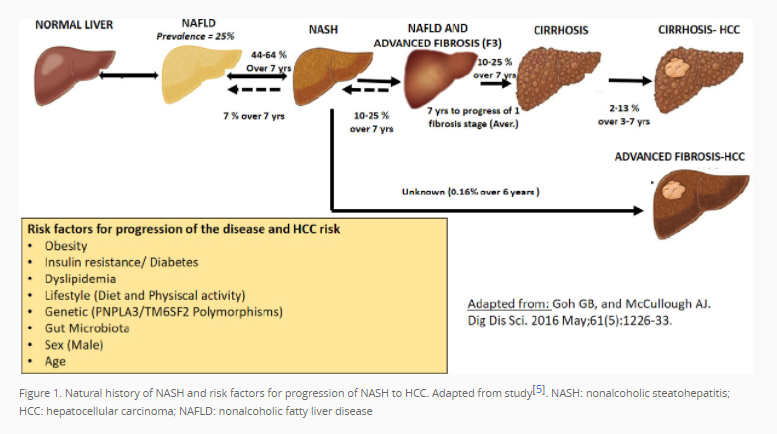 It can help determine the size of the liver, its density, structure, the presence of tumors or cysts, and bleeding.
It can help determine the size of the liver, its density, structure, the presence of tumors or cysts, and bleeding. How the diagnosis works
Diagnostic results
All diagnostic results should be evaluated by a physician to determine further treatment and ensure the best possible health for the patient.
Prevention of liver diseases
Nutrition
Moderate alcohol consumption
Prevention of viral infections
Sedentary lifestyle
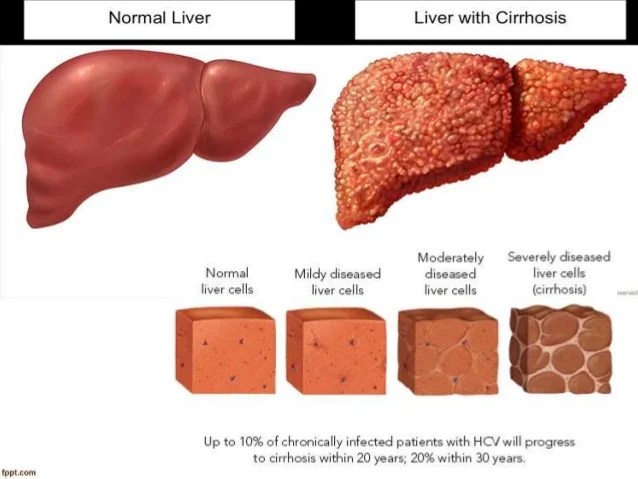 Try to move away from screens, find time outside and exercise. Practice breathing exercises, walking, and other stress-free movement.
Try to move away from screens, find time outside and exercise. Practice breathing exercises, walking, and other stress-free movement. Under the control of hormonal processes
Proper nutrition for liver health
What is liver health?
How to eat right to keep your liver healthy?
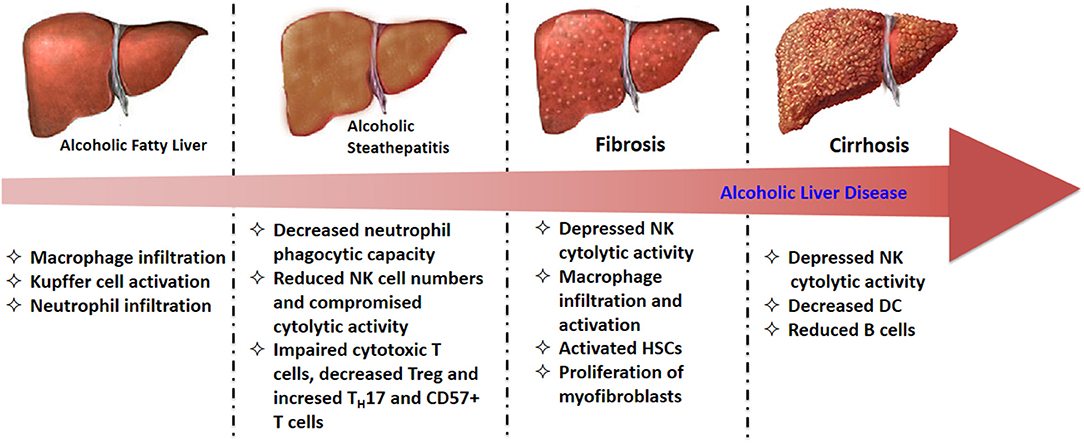
What else can you do?

90 387 Avocado
Related videos:
Q&A:
What is liver ultrasound?
What is the normal size of the liver on ultrasound?
What diseases can lead to a change in the size of the liver on ultrasound?

What does enlarged liver mean on ultrasound?
What does the reduced size of the liver on ultrasound mean?
How to determine the condition of the liver on ultrasound?


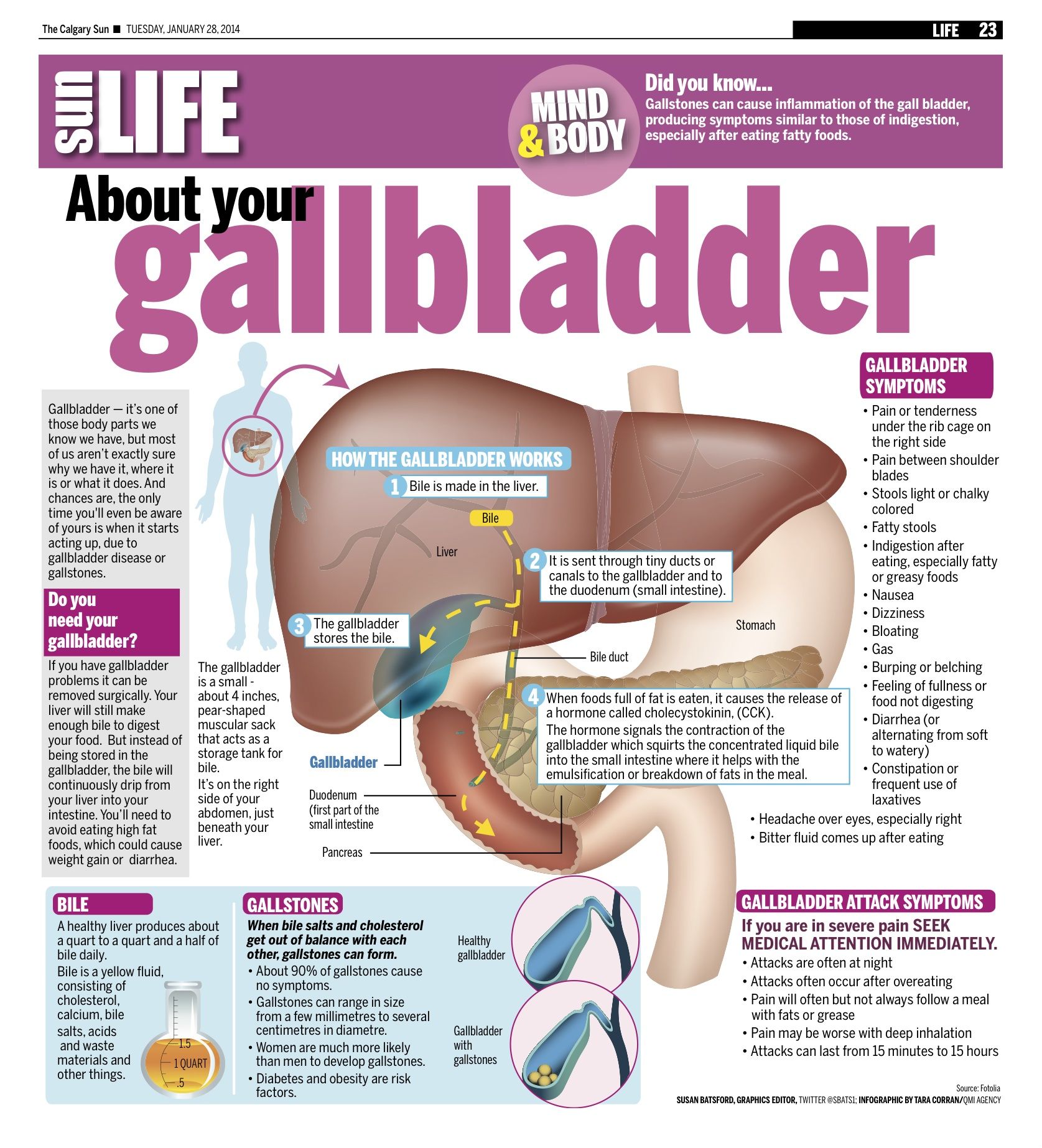

 4 Indications for liver ultrasound
4 Indications for liver ultrasound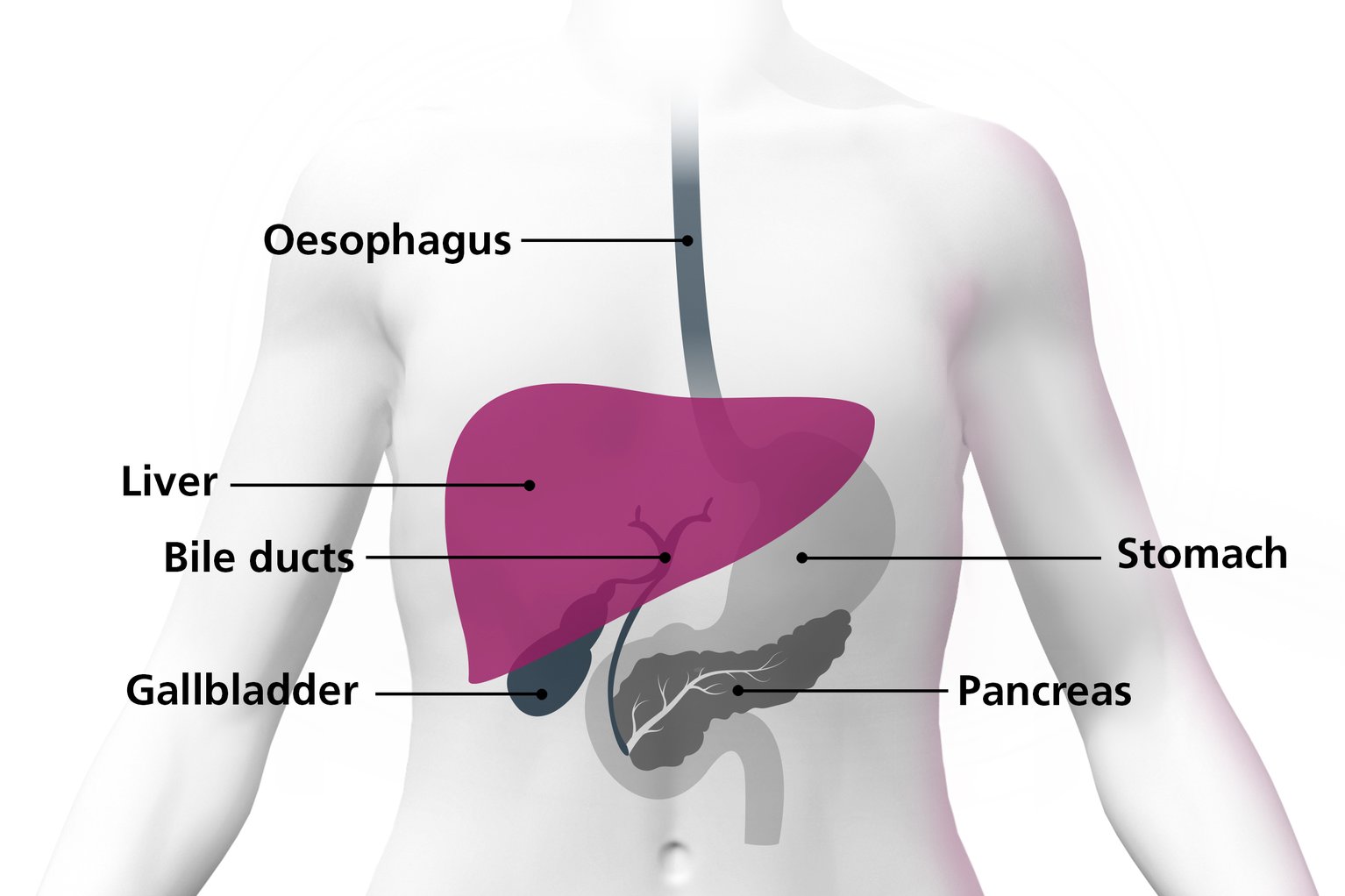 16.2 Moderate alcohol consumption
16.2 Moderate alcohol consumption
